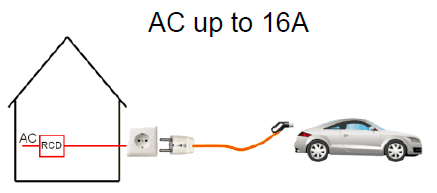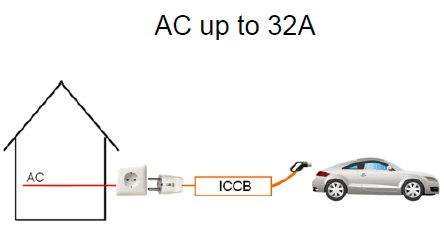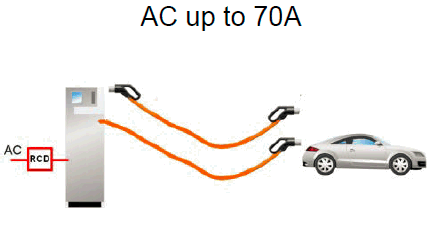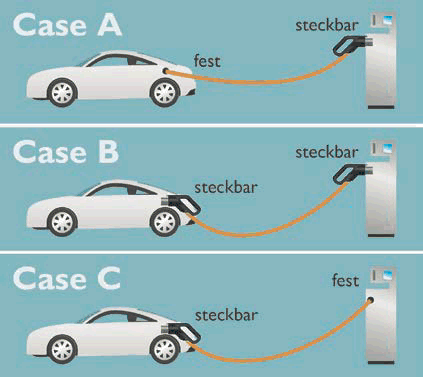Following my previous article (Phoenix Contact E-Mobility Connectivity – The Basics), I would like to provide a little background into the different charging modes that are currently employed for charging electric vehicles.
Charging Modes
Currently, there are four modes of charging as defined in IEC61851-1 and they are:
Charging Mode 1:
This is where the vehicle is charged with AC on a domestic household supply without any further protective measures. In the case of a single-phase network, voltages of up to 250 V and in the case of a three-phase network, voltages of up to 480 V may be applied. The current is limited to 16 A.
Note: this charging mode is not recommended in the absence of a residual current device in the domestic household supply.
Charging mode 2:
As in the case of charging mode 1, charging occurs with AC and with the same domestic household supply voltage limitations. In addition, the charging cable features an in-cable control box (ICCB).
This performs the function of a residual current device during the charging process. This device is required for protection against electric shocks. A control box must be in the plug or within 0.3 metres of the plug. As such, currents of up to 32 A are therefore permitted in this charging mode.
Charging mode 3:
Charging mode 3 regulates AC charging with a charging station or wall box (small charging station for mounting on the wall). The necessary residual current protection is integrated. As a general rule, charging stations with up to 70 A may be used in this charging mode.
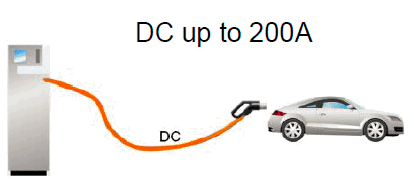
Charging mode 4:
DC charging with up to 200 A is defined by charging mode 4. Charging stations with enhanced protective measures such as “hot disconnect” (protection against premature removal under load) are necessary here.
Speed of Charging
The higher the current capacity of the charging process, the faster the electric vehicle can be charged. Therefore, a charging process in charging mode 1, for example, can last several hours. In contrast, a charging process in charging mode 4 is completed within a few minutes.
Charging case A:
A charging cable fastened to the vehicle with a plug is inserted into the charging station’s socket outlet. However, there is no demand for this case in any market.
Charging case B:
A plug-in charging cable with a connector and a plug is inserted into the vehicle inlet in the vehicle, at one end, and the socket outlet in the charging station, at the other.
Charging case C:
A charging cable fastened to the charging station with a connector is inserted into the inlet in the vehicle. [Most common]
Phoenix Contact is developing a comprehensive range of products for electromobility charging systems. The goal is to provide standard-compliant charging connectors for the worldwide electrical mobility market.
For the purpose of naming the elements involved in the charging process of an electric vehicle, some key terms have been defined. During the charging process, the Connector (vehicle side) is inserted into the Vehicle Inlet (vehicle side). In addition, the Plug (charging station side) is inserted into the Socket Outlet (charging station side).
Want to find out more? Feel free to contact us at marketing@phoenixcontact.com.sg!


